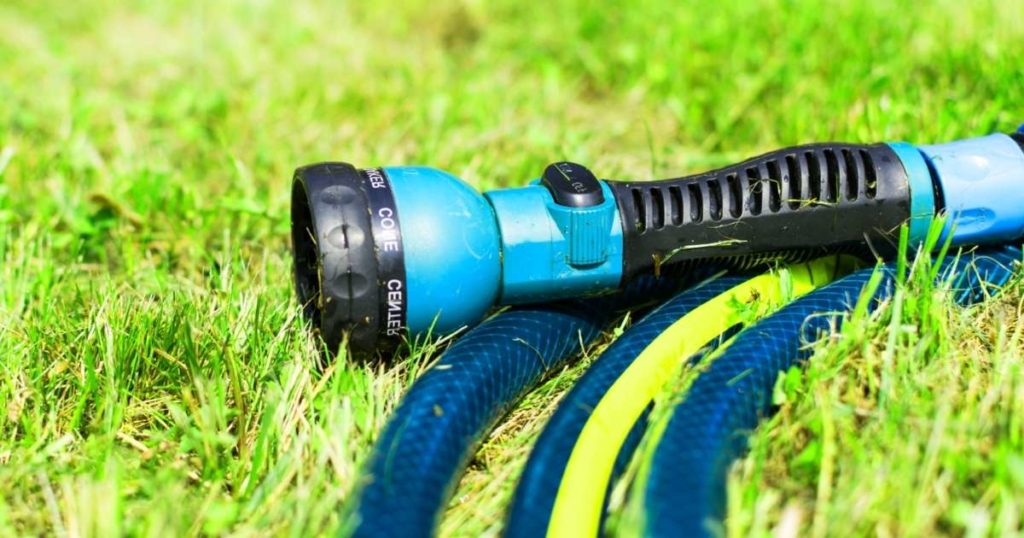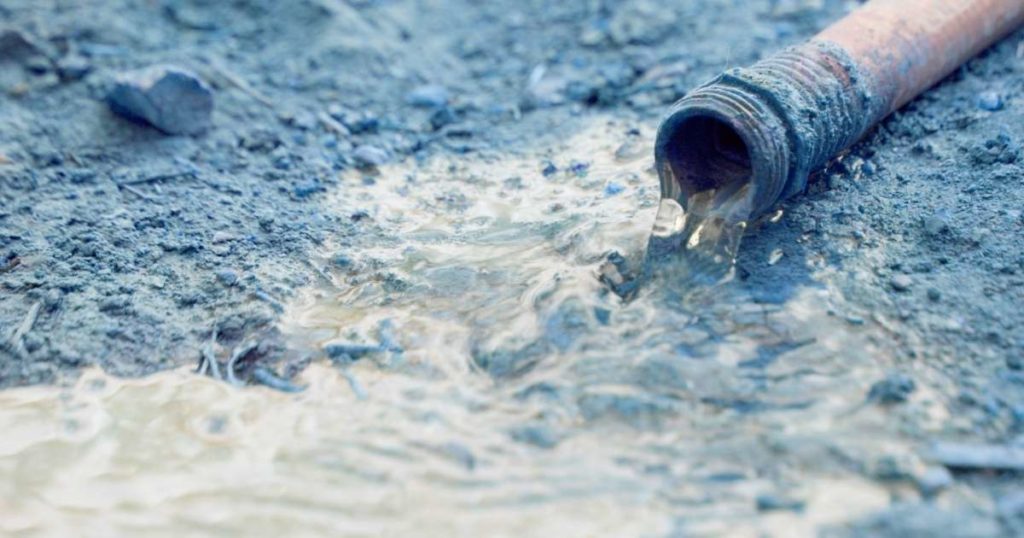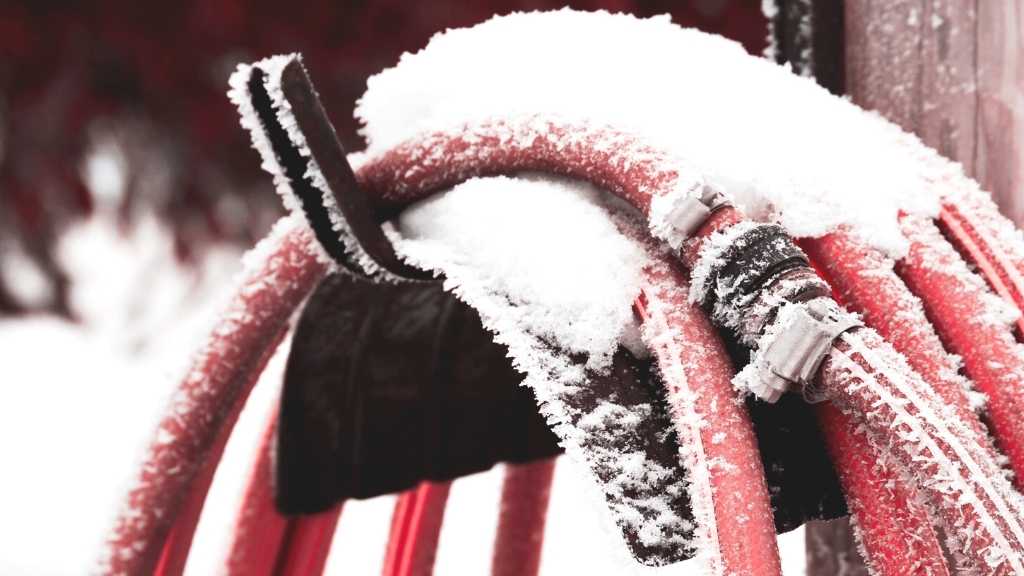When we hear about cleaning garden hoses, we usually think of the hose’s exterior that might get dirty in time. This happens without a doubt no matter how careful we are, as it is carried all around the garden, collecting dirt, dried plant fragments, and so on.
A second aspect to consider is the garden hose interior dirt. As strange as it may sound, even if the hose is used to carry water, in time, the interior side of the hose can also collect residuals from the water. Another type of “dirt” is mildew, which develops if the hose is not being dried after use.
Other times even algae can be found inside of a garden hose, due to the water characteristics and improper hose storage.
To avoid these issues, the solution is to clean the garden hose. But how can you properly clean a hose, especially if it has 10 feet in length? In this post, we detail the methods successfully used to clean the mildew from a garden hose or to clean a clogged garden hose.
Cleaning a Water Hose Option 1
To properly clean a garden hose, both on the interior and exterior, go through the below steps:
- Prepare a bleach cleaning mixture solution using the ratio of 1 cup (240 mL) of bleach to 1 gallon (3.8 Liters) of water.
- Fill up around ½ of a large bath basin, or a bucket, with this cleaning solution.
- Remove any fittings and hose ends from the garden hose.
- Immerse the garden hose into the bath basin making sure it is all covered with the cleaning solution.
- Let it sit for 12 – 24 hours
- On the next day, pick up the hose and correctly dispose of the water in a sewer
- Add clean water to the basin bath and immerse the hose in it for up to 1 hour
- Pick up the hose and connect the hose ends
- Connect the hose to the faucet and turn on the water supply
- Let the water run through the garden hose for a couple of minutes to rinse it
*do not dispose of the water mixed with bleach or any other cleaning solutions in the garden as it might damage the plants.
According to Wikipedia, bleach has a broad spectrum of bactericidal properties, and it is useful for disinfecting and sterilizing. It is used in swimming pool sanitation to control bacteria, viruses, and algae and in many places where sterile conditions are required. Bleaches also have other uses like removing mildew, killing weeds, and increasing the longevity of cut flowers.
Warning! Bleach is an extremely toxic cleaning agent and can be dangerous for your health if used incorrectly. Keep it away from children and pets and wash your hands with soap and fresh water immediately after using bleach for any purpose.
Cleaning a Water Hose Option 2
For gardening hoses that were not cleaned for years and which have built important layers of residuals on the inside, try this second cleaning option as presented below:
- Prepare a bleach cleaning mixture solution using the ratio of 1 cup (240 mL) of bleach to 1 gallon (3.8 Liters) of water.
- Fill up around ½ of a large bath basin or bucket with this cleaning solution
- Uncoil the garden hose in a straight line if possible
- Install a hose cap at the male end, instead of your hose sprayer.
- Connect the female end of the hose to a water pump
- Immerse the water pump in the bleach cleaning solution
- Pump the cleaning solution into the hose
- Disconnect the hose from the pump but place the hose end upwards, on a higher stand to prevent the water draining out from the hose
- Let it sit for 12 – 24 hours
- Clean the water pump with fresh water before storing it away
- On the next day, drain the hose by correctly disposing of the water into a sewer
- Connect the hose to the faucet and turn on the water flow
- Let the water run for a couple of minutes to totally rinse it
How to Clean a Hose Nozzle or a Clogged Hose Sprayer

In the previous sections, we understood what type of residuals can a hose accumulate. But the hose nozzles face the same problem.
Most commonly, after a longer period of use, the hose sprayer can build up mineral or calcium deposits from the hard water which will restrict, or even stop, water from flowing out. If you notice the hose sprayer doesn’t spray water evenly, the cause can be that some of the small holes in the sprayer head are clogged.
There are different ways to clean the hose nozzle sprayer.
One solution is to unscrew the sprayer head and start cleaning it using water and a brush. This implies a longer effort, and it may also cause serious problems when you need to put all the sprayer pieces back together. Reconnecting it in the wrong way will cause functionality failures and water leakage.
We believe that one of the most efficient ways to clean the hose sprayers and nozzles is using a CLR cleaner or a different cleaning agent with similar functionality and characteristics.
CLR is a cleaning formula that dissolves calcium, lime, and rust from most home appliances and it is safe to use on a various range of surfaces and material types, including hose sprayers, and hose nozzles, in general.
Clean a clogged garden hose sprayer in these simple steps:
- Unscrew the sprayer nozzle from the hose
- Poor the CLR cleaning solution into a bowl
- Immerse the sprayer head into the solution and let it rest for 8 to 10 hours, or until the next day
- Rinse it with fresh water
- Connect the hose sprayer to the hose
- Turn on the water supply
Repeat the process if the nozzle is still not spraying the water evenly. However, we are convinced your sprayer will start functioning as new again.
Conclusion
Both garden hoses and hose nozzles build residuals in time, even if both these tools are used for watering. Cleaning these watering tools is necessary, to avoid functionality or sanitary issues in the long run.
In this post, we detailed different cleaning methods which are successfully used to clean both garden hoses and hose sprayers.



